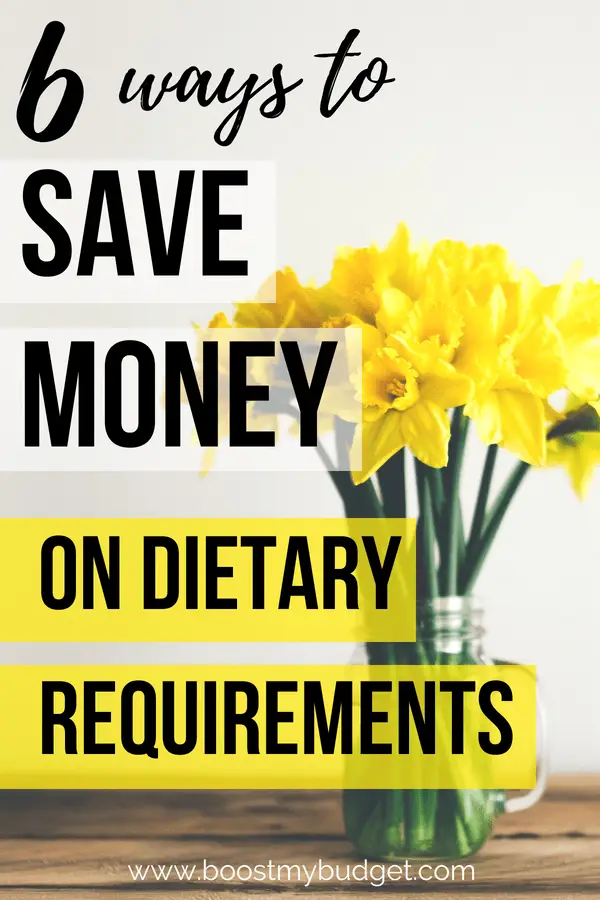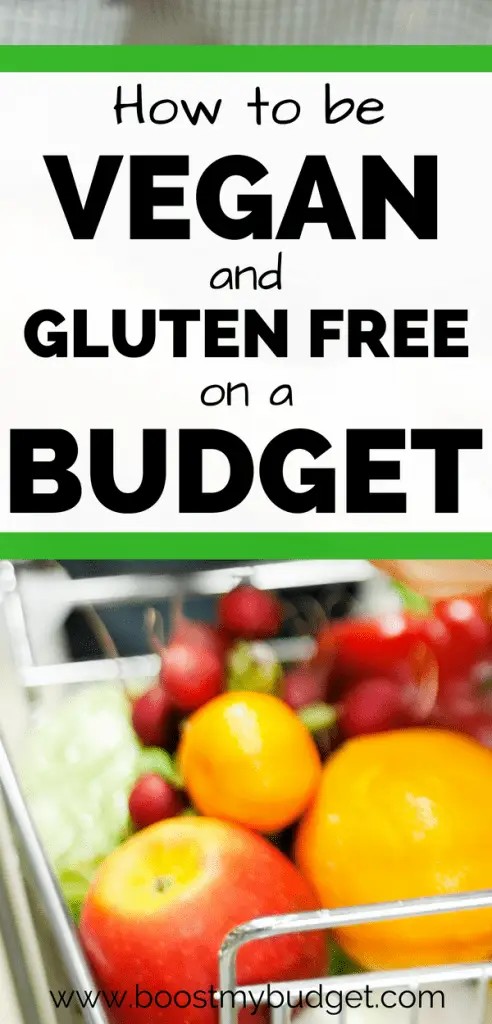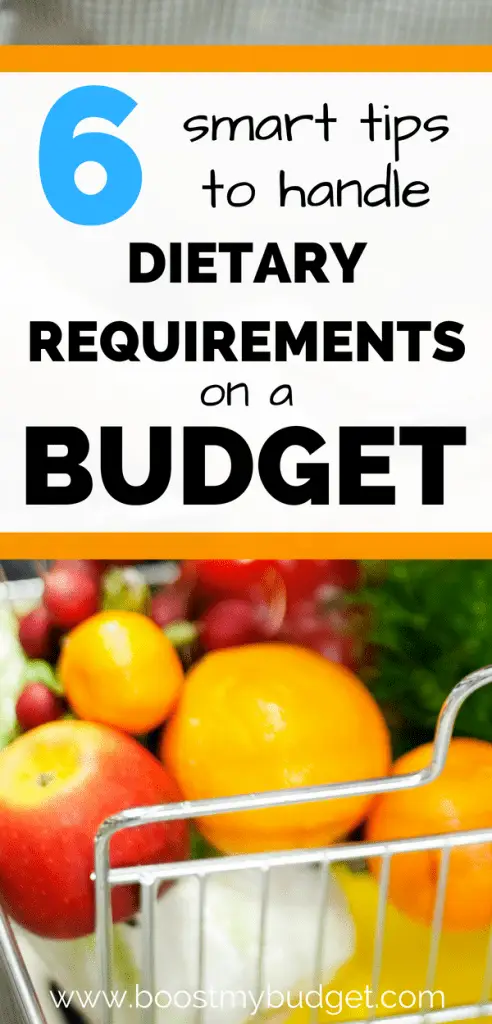This week’s guest post is by student journalist Katie Blackbourne. Katie follows a gluten free and vegan diet – and she’s also on a tight budget. Living with dietary requirements can be pricey, but Katie has plenty of tricks up her sleeve to help you look after your body and your bank account.
Having a specific dietary requirement can be tricky, especially when you’re still adjusting to it. As you’re finding out what you can and can’t eat, your food shop might get more expensive.
If you’ve been living with a certain diet for your whole life, you’ve probably got the money-saving tricks down. But when you’ve had to change your diet later in life, it can be a struggle to work out what you can eat – and what you can afford to eat.
I developed a gluten sensitivity just over a year ago, and on top of that I’ve recently decided to adopt a plant-based diet. On a student budget, it’s been hard work at times trying to find gluten-free food I could afford.
But a year on I’ve got some dietary requirement budget hacks sorted, so going vegan has been much less of a struggle than I expected.
Here are my top 6 budget hacks for handling dietary requirements on a low income.
1. Read
Read lots of different food blogs.
If it’s a budget food blog, think about substitutions you can make, like switching meat for tofu or beans, butter for oil or dairy-free spread, sugar for honey or fruit.
If it’s a blog about your specific dietary requirements but you find it’s too expensive for you, research cheaper alternatives to ingredients or look for supermarket own brand versions of ingredients where possible, to cater recipes to your budget.
Or just leave out the expensive ingredients. It’ll taste just as nice without the saffron, I promise!
Alternatively, you can take a look in your local library and see if they have any recipe books you can borrow.
Write down recipes you find, but with your substitutions, in a big notebook or scrapbook so you don’t have to keep searching online whenever you want to cook.
2. Think positive
Rather than panicking that “I can’t eat these foods anymore!”, write a list of things you can eat.
Look up recipes using those ingredients and see the abundance of options you have. Think about meals you used to have and what substitutions you can make.
I loved eating scrambled eggs before switching to a plant-based diet. After an insider tip from a vegan friend, all I have to do now is roughly chop some tofu, season with salt and pepper, and fry lightly to get a very close substitute for scrambled eggs. Perfect on (gluten-free) toast with fried tomato.
Rather than a negative “I have to give up this food” mind-set, go for the positive “I can get creative with this” mind-set!
3. Look abroad
Many cultures around the world have diets that focus on different staples than we do and might have more options that cater to your dietary requirements.
Take the chance to branch out into other cultures’ foods when looking for inspiration. You don’t have to go overseas but factor in to your reading that other countries’ cuisines might be more suitable for you.
For example, some East Asian food doesn’t traditionally have a lot of wheat-based products and uses very little – if any – dairy.
Areas with a high population of Buddhists can be a good starting point for plant-based diets.
4. Do it yourself
Cook for yourself to the greatest extent you can. Firstly, it means you know exactly what’s in your food and don’t have to worry about cross-contamination.
Cooking in bulk works out a lot cheaper than buying takeaways and microwave meals – or eating out when it’s Thursday night and you can’t be bothered. Especially when dietary-requirement-specific meals are more expensive in general.
Even preparing your own lunches to take to school or work means you won’t be caught out trying to find something you physically can eat that’s also in your budget.
I know from experience that if you don’t already have a go-to you can use up your whole lunch hour looking. If your cheap, diet-compliant lunch is already in your bag – no problem!
5. Research
Get used to constantly reading ingredients lists. All kinds of allergens and common sensitivity triggers (like lactose and gluten) are usually printed in bold on packaging, but there may be other ingredients you can’t have that you need to be aware of.
For example, in the case of vegans we have to look out for ingredients that are processed using animal products, as well as the animal products themselves, which requires a bit more research and package reading.
Depending on your personal requirements, you might need to do a little or a lot of research, but don’t be phased! Knowing what you’re looking for means you can venture out of the “free-from” aisle and find cheaper, and more varied, alternatives elsewhere.
If, like me, your eyesight isn’t fantastic, it can be useful to keep a magnifying glass on your person or in your bag.
6. Develop a go-to
After you’ve had a bit of time to adjust to your diet, find a staple “cheap and quick” food you can buy and cook in an emergency. A “got nothing in but payday is a few days away and I’ve got pennies left” kind of situation.
For a lot of people, that’s a simple pasta dish.
Pasta is super-cheap if it’s not gluten-free. A small tin of chopped tomatoes costs pennies. Another vegetable or two to bulk it out would cost pennies. Make sure to keep herbs and spices in your cupboard at all times, when you can afford to top them up, so you can jazz any meal up quite a lot.
You can substitute pasta for rice, for about the same price, if you can’t eat pasta.
In my case, I go for a baked potato, which if you buy them loose are very cheap. They’re quick and easy to cook in a microwave or the oven if I’m too tired to make more effort.
I can prepare it in different ways – whole, sliced, cubed, fries – and top with whatever I’ve got lying around, which is usually something like a third of a tin of beans or the last scrapings of a tub of humus.
Having a go-to quick and cheap meal means even when you’ve got barely anything to spend, and are tired from a long working week, you still can put a hot meal in your belly that won’t make you sick.



